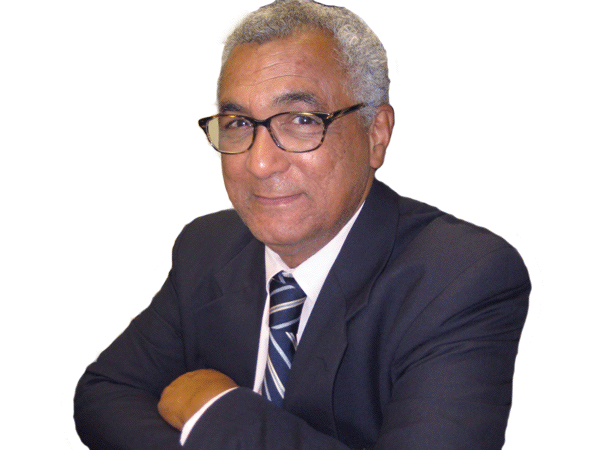
G. Scott Anderson, born in Hawaii and raised in Brooklyn, has been at Borough of Manhattan Community College for 20 years, the last 15 as vice president of administration and planning. He has seen the college through 9/11, the Northeast blackout of 2003 and Superstorm Sandy, and is one of the leaders of B.M.C.C.’s sustainability efforts. He sat down recently with Downtown Express at its main campus at 199 Chambers St. and talked about how those events, especially 9/11, affected the college’s green projects today.
Interview has been edited and condensed.
—Dusica Sue Malesevic
What did you study at college? How did you get into college administration?
My undergraduate work, half of it was in the UK. I studied political theory and British labor history [in the] 19th century. I got a chance to study the coal miners in northern Wales. I did a project on the wives, widows and mothers of World War I veterans.
I came back to America and was offered a job at the City University of New York, in higher education administration and I stayed with it. I started at Queensborough Community College so I believe in the community college. I also believe that working in administration, I could probably affect policy. Here I am, still.
How has your job changed?
The job that I took is not the job that it became after 9/11 — the job changed so much. I became much more focused on space management.
I started off being mostly involved in the finance side but less than 12 months later, when we lost Fiterman Hall when the Towers came down, we lost 40 percent of our instructional capacity — 70 classrooms disappeared that day. We had to find out how we could structure the teaching clock, the workweek so that could absorb the same press of people. We had about 16,600 students on 9/11. On January 15, 2002, we went up to 17,400. It was the opposite of what people thought.
We kept this building open and it serviced about eight different agencies [including the] U.S. Army, N.Y.P.D., F.D.N.Y. and the search dogs.
There were men and women who refused to get off the pile. They would work 12, 16 hours, come to the campus, catch two to three hours sleep and go right back. Some of them slept sitting down.
We were able to reopen our college on Oct. 1, three weeks after the event. We were pressed for space, but we were able to open. The other schools that had their staff leave…were out of commission for the entire semester. Many of them didn’t open until the following February.
Did B.M.C.C.’s sustainability efforts have anything to do with 9/11?
In a very strange way, it did. In November, December the university…did a request for proposals. There [were] some funding or grant monies available and I put in a proposal for what I call the non-terrestrially based communications — basically…solar panels. A point-to-point laser communications system — something like microwave beaming.
We have a four-block long roof, one of the longest roofs in New York. About two and half blocks of it is totally unobstructed with a view toward New Jersey. For about one block, you can actually see the Municipal Building. My idea, at the time, was if we could put up a microwave, or solar panel system, we could act as a conduit or hub for any communication that might fall off the grid. From the Municipal Building to B.M.C.C.’s roof to New Jersey and then slingshot Uptown. It is really easy to do in terms of telecommunications. It happens in nanoseconds. That was the first push.
I first made the pitch in 2001 and that’s when the issue of falling off the grid — not having reliable power — is what drove me to argue for a rooftop communication system that depended on free energy, which is solar panels.
In a funny way 9/11 sort of drove us to think about it. Lo and behold, 2003, we fell of the grid, in fact the whole Northeast fell off the grid.
So, I was looking for just enough alternative energy to run our facility where we would have enough power to keep our web service going.
Borough President [Scott] Stringer actually gave us money to put a solar panel on the roof. We didn’t realize how long it was going to take for the engineering side of this to be worked out. Some good things happened even though there has been a hiatus. The panels are a little, little cheaper. They’re far more efficient than they were six, seven years ago and they’re also lighter, which makes a difference.
We want to start installing beginning April 1 of next year. [Once completed] it will be the largest one in Manhattan.
Will that be enough to power this building?
No, but it’ll be enough to power emergency services. We’ve fallen off the grid several times since I’ve been here. I’ve been here 20 years so that’s every five years almost. I’m saying, ‘oh, man, what’s going to happen next.’































